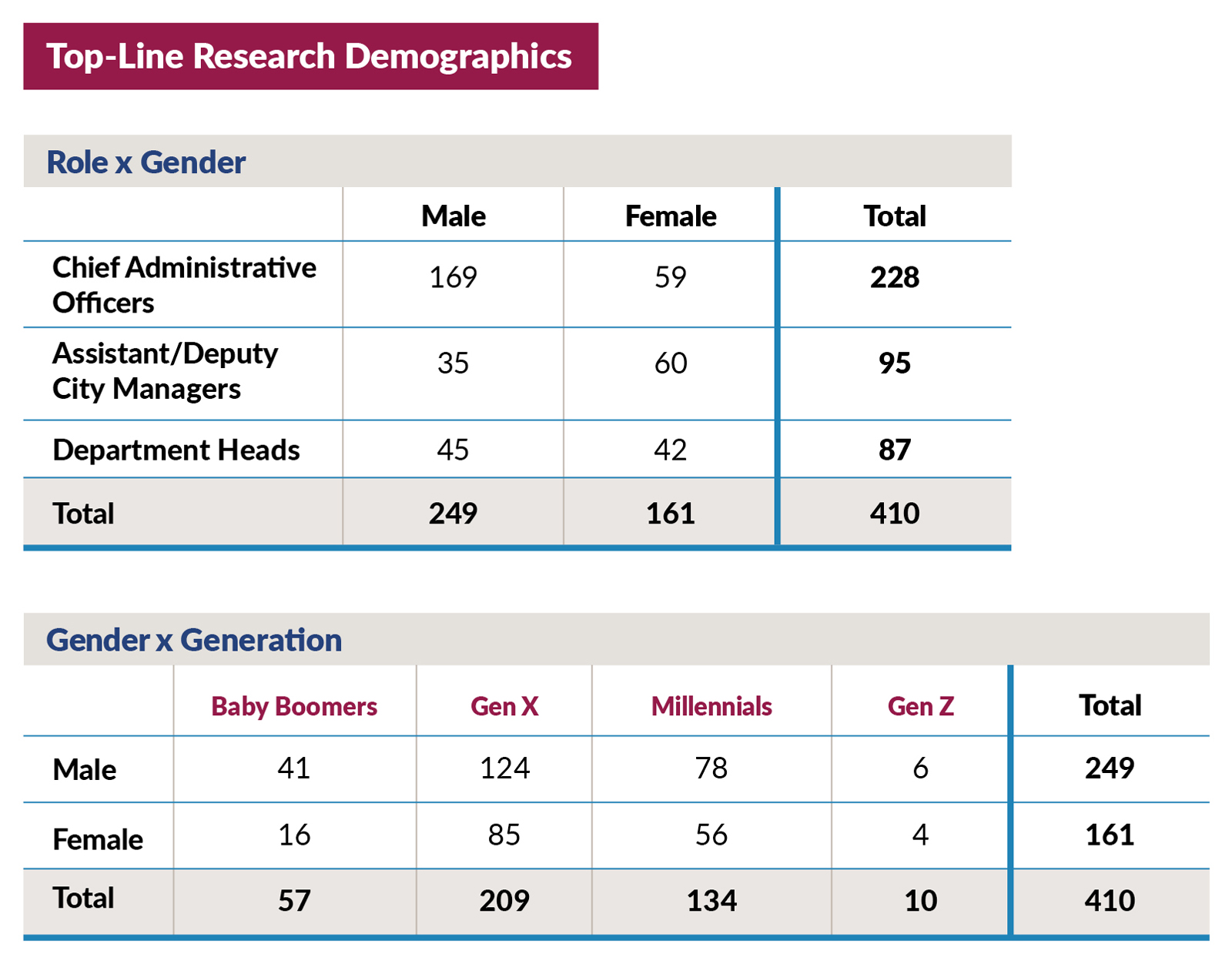
Executive continuity in local government isn’t just a paperwork issue or HR statistic; it’s the difference between stability and turmoil for communities. When a city manager, county administrator, or department head leaves, it’s not just an empty office. It means critical projects stall, institutional wisdom walks out the door, and the sense of direction that teams and residents rely on starts to wane. These departures hit staff morale and public confidence in ways that salary spreadsheets rarely capture. The truth is, every leadership transition leaves a mark, not just on the organization, but on the everyday lives of the people that governments serve.
The realities driving this climate of volatility are complex. Local government leaders must negotiate relentless public scrutiny, resource constraints, shifting political currents, and increasing operational demands. These pressures coincide with workforce shortages and ever-rising expectations from both residents and elected officials. Traditional retention tactics—salary adjustments, expanded benefits, or recognition programs—have been deployed with limited success. While these measures are important, they too often fail to address the deeper motivational dynamics underlying executive tenure.
Recent research moves this conversation beyond transactional solutions. It interrogates not only why executives are leaving, but also what enables those who remain to persist, thrive,
and lead with vision under strain. The analytical foundation of this research focuses on two distinct yet complementary psychological domains: Public Service Motivation (PSM) and Psychological Capital (PsyCap).
PSM refers to an enduring commitment to serve the public good, often driving individuals to public sector careers despite disproportionate challenges. Executives with strong PSM are drawn to the meaningfulness of their work, deriving satisfaction from advancing the common good, demonstrating compassion, and experiencing a sense of civic duty. In this context, PSM explains the initial attraction to governmental leadership and the investment of personal energy in navigating the complexities of local administration.
However, this research identifies PsyCap as an equally vital, and perhaps more decisive, predictor of sustained executive retention. Psychological Capital is a multidimensional construct that encompasses four key psychological resources: hope, efficacy, resilience, and optimism (known collectively as HERO). Executives high in PsyCap are not merely idealistic; they demonstrate a robust ability to set and recalibrate goals, maintain confidence in their ability to overcome obstacles, bounce back from setbacks, and view workplace adversity as temporary and manageable. In short, PsyCap provides the renewable internal resources necessary to transform conviction into sustained engagement, the essential quality required for endurance in turbulent administrative environments.
A quantitative analysis of more than 400 local government senior executives underscores these findings with compelling data. PsyCap demonstrated a considerably stronger influence on turnover intentions than PSM, accounting for 22.5% of the variance compared to just 4.7% for PSM. To put this in context, even highly motivated leaders, those driven by service, may be at risk of leaving if their psychological resources are depleted. It is the presence of hope, optimism, and efficacy that most powerfully enables executives to persist through adversity and remain committed to their roles. Stepwise regression analysis identified these key subcomponents of PsyCap as the most significant psychological predictors of an executive’s intention to stay or leave, alongside a lesser but still notable effect for PSM’s attraction to policy making. This model ultimately explained nearly one-third of the total variance in turnover intentions among surveyed leaders.

The implications of these findings are profound for both practitioners and policymakers. While PSM remains an important cornerstone for attracting and initially engaging talent in public service, its influence decreases under ongoing hardship if unaccompanied by the presence and cultivation of strong psychological capital. A leader’s capacity for hope, optimism, and resilience shapes their ability to turn organizational values into real, lasting results for the community.
With executive vacancies on the rise and continuity of public services increasingly at risk, these findings call for a fundamental shift in retention strategies. Simply increasing pay or benefits isn’t enough to keep high-level leaders committed and on the job. Lasting retention depends on fostering the inner resources and workplace culture that truly enable leaders to navigate adversity, sustain engagement, and stay the course. The following practices offer a blueprint for transforming these insights into action.
Practices That Strengthen Executive Retention
Sustained retention of executive talent in local government is rarely the result of a single policy or incentive. Instead, it depends on a deliberate approach to cultivating psychological resources, reframing organizational culture, and forging alignment with public service values.
1. Develop Psychological Capital Intentionally
Resilience, optimism, hope, and efficacy are not static traits but learnable, renewable skills. Evidence shows these elements measurably predict executive staying power and effectiveness. Hope manifests as the ability to set clear goals and find alternative pathways when challenges arise, while efficacy is built through mastery and collaborative learning. Optimism enables leaders to see setbacks as temporary, and resilience allows rapid recovery from difficulties.
Investment in these capacities should be prioritized. This can be achieved through structured professional development, evidence-based coaching, mentorship, and intentional recovery practices. Approaches such as executive coaching, peer support, mindfulness, and ongoing leadership training offer practical ways to strengthen psychological capital, preventing depletion in high-stress environments.
2. Cultivate a Culture That Energizes
Culture is continuously shaped by leadership behavior and the stories shared within organizations. Executives have a unique role in shaping microclimates that either replenish or exhaust the workforce. This is accomplished by inviting managers and department heads into policy design, not only implementation, fostering true engagement and a sense of shared ownership. Emphasizing and celebrating incremental progress, facilitating collaborative problem-solving, and communicating a clear line of sight from daily work to community impact helps create climates where people want to persist.
These positive microcultures do not emerge by accident—they result from intentional involvement and messaging at every level of leadership. When trusted to influence direction, leaders report deeper commitment and resilience.
3. Normalize Executive Well-Being
Persistent expectations of toughness among senior leaders can create a culture ripe for burnout. It is essential to dispel notions of indefatigability and foster transparency about stress, workload, and recovery. Regular, stigma-free conversations at the executive level about personal and organizational well-being help move practices from hidden exhaustion to shared responsibility.
Leaders who model sustainable work habits, not just hard-driving output, send a powerful signal to their teams, legitimizing similar practices for staff across the organization and reducing stigma about self-care.
4. Anchor Recognition in Meaningful Contribution
Recognition has greater impact than perfunctory ceremony. Senior leaders report that being acknowledged for their role in meaningful, community-focused outcomes deeply reinforces motivation and resilience. Organizations should move beyond symbolic rewards to highlight how executive work advances real progress for residents and staff, explicitly linking appreciation to core values and lived results.
Purpose-driven recognition strengthens both public service motivation and psychological capital, reinforcing retention not by external reward but by a sense of belonging and effectiveness.
5. Reconnect Regularly with Purpose
Periods of budgetary constraint or political unrest can erode morale and clarity of mission. In such times, organizational leaders benefit from structured opportunities to revisit and discuss the original motivations that brought them to public service and the ways their work is making a difference. Facilitated reflection on foundational values and review of tangible achievements reinforce a forward-looking identity, fueling engagement even in turbulent conditions.
Setting aside time for these conversations, both individually and collectively, offers executives and their teams a chance to maintain perspective, renew resilience, and stay connected to the long-term vision.
These strategies, drawn from both empirical research and executive insight, underscore that enduring retention involves more than recruitment and compensation. It is about building the psychological and cultural conditions under which leaders and their teams choose to remain, adapt, and advance the mission of public service, even when challenges mount. By investing in psychological capital, shaping positive cultures, prioritizing executive well-being, grounding recognition in real impact, and frequently reconnecting with purpose, organizations position themselves to preserve and rejuvenate leadership talent for the long term.
Moving Forward: The “Stay Factor” as Civic Mandate
Retention of executive talent in local government isn’t just a personnel matter; it’s become a foundation for community resilience. Every leader who chooses to stay carries forward not only essential services but trust, continuity, and the connective tissue of civic life. When that stability is lost, the impact ripples far beyond the government building—costs rise, progress fades, and community confidence falters.
This research makes one thing clear: sustaining leadership isn’t about plugging leaks in the pipeline or stacking up incentives. It’s about fueling the day-to-day capacities—like hope, purpose, and optimism—that allow leaders not just to survive, but to be meaningfully present and engaged despite relentless demands.
Facilitating environments and mindsets that help executives stay—renewed and resilient—is the real lever for bolstering institutional memory, cultural coherence, and public trust. Investing in psychological capital isn’t a side strategy; it’s the heart of modern retention. It takes personal reflection, peer support, and most of all, daring to remind ourselves why leadership in local government is, at its core, an act of hope.
Retention is purpose-driven leadership in action. Your choice—to stay, to keep leading, to keep believing—matters. Your leadership shapes not just what gets accomplished today, but how your community endures tomorrow. Because in the end, communities do not simply need public services. They need public servants—leaders who stay, who dream, who carry the future forward. They need you.

DR. CORRIN SPIEGEL, ICMA-CM, is president and CEO of Arete Strategic, and cohost of AuthentiCity FM podcast.
New, Reduced Membership Dues
A new, reduced dues rate is available for CAOs/ACAOs, along with additional discounts for those in smaller communities, has been implemented. Learn more and be sure to join or renew today!
